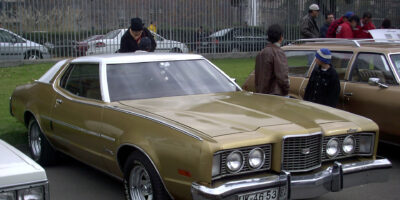Old Car Salvage Yards Near Me: A Treasure Trove for Auto Enthusiasts
Driving past an old car salvage yard, you might see a spread of rusty relics and think of it as nothing more than a junkyard. However, these salvage yards hold hidden treasures for those in the know. Whether you’re restoring a classic car, hunting for parts, or looking to scrap an old vehicle, understanding the intricacies of local salvage yards can be incredibly valuable.
The Appeal of Old Car Salvage Yards
Salvage yards are repositories of automotive history. Each vehicle tells a story, and many parts are still functional or restorable. They are popular among car enthusiasts looking for original parts to maintain the authenticity of their restoration projects.
Salvage yards also offer a sustainable way to recycle car parts. Instead of manufacturing new components, individuals can reuse what has already been produced, reducing waste and environmental impact.
Identifying the Right Salvage Yard
Not all salvage yards are the same. Some specialize in specific types of vehicles, such as classic cars, trucks, or foreign models. It’s important to identify tags and characteristics that fit your specific needs.
One approach to finding the right yard is to search online. Many salvage yards have websites detailing their inventories. You can often see pictures, part lists, and availability status online.
Another tactic is to join local car clubs or online forums. Members often share recommendations and can direct you to the best locations. First-hand experiences can be invaluable when it comes to finding reliable salvage yards.
How to Navigate a Salvage Yard Safely
Safety should always be a priority. Salvage yards can be hazardous with sharp edges, unstable vehicles, and other dangers. Wear sturdy gloves, steel-toed boots, and safety glasses. Be cautious when moving around the yard, especially if you’re handling heavy parts.
Most salvage yards are organized in some way, either by make, model, or part type. Familiarize yourself with the layout to make your visit more efficient. Maps are often available at the entrance or on the salvage yard’s website.
Tools You’ll Need
Bring a reliable set of tools. Essentials include wrenches, screwdrivers, pliers, and a socket set. Some salvage yards may offer tool rentals, but it’s always better to have your own. A flashlight can also be useful for looking into dark engine compartments or under vehicles.
Also consider bringing a notepad or a phone to take notes. Sometimes, finding the right part can take multiple trips, so having detailed notes can save time on future visits.
Locating and Identifying Quality Parts
One of the most challenging parts of visiting a salvage yard is ensuring the parts you find are of high quality. Start by checking for visible damage. Look for cracks, rust, or excessive wear. If possible, test moving parts to make sure they work properly.
Many salvage yards mark parts with color-coded tags to indicate their condition. Familiarize yourself with their system. Ask the yard staff for clarification if needed. This helps in quickly identifying the parts that are worth considering.
If you’re uncertain about a part’s functionality, bring it to the yard’s office. Many places have knowledgeable staff who can help you determine if the part is salvageable.
The Economic Benefit of Salvage Yards
Salvage yards can provide significant savings. New parts are expensive, and the cost can add up quickly, especially for older cars with rare parts. Salvage yards offer parts at a fraction of the cost of new ones. This makes it feasible to maintain and repair vehicles that might otherwise be too costly to keep on the road.
The value isn’t just in the parts. Many salvage yards will buy old cars, regardless of their condition. If you have a vehicle that isn’t worth repairing, selling it to a salvage yard can provide some return. Yards often pay in cash, taking much of the hassle out of the selling process.
The Environmental Impact
Beyond the economic benefits, using salvage yards helps the environment. Recycling car parts reduces the demand for new manufacturing, which consumes energy and raw materials. It also keeps usable parts out of landfills.
Sustainability is becoming an increasingly important consideration for consumers. Salvage yards support a circular economy, where resources are reused and repurposed to extend their life cycle.
Legal Considerations
Different areas have varying regulations regarding salvage yards. It’s important to understand local laws to avoid any legal issues. Some places require permits for removing certain parts, while others have restrictions on what can be sold.
If you’re selling a car to a salvage yard, ensure you have the title and any necessary documentation. This simplifies the transaction and ensures compliance with local laws.
Vehicle Histories
Many salvage yards have partnerships with insurance companies or auction houses. Vehicles might end up in a salvage yard after an accident, flood, or other destructive event. Be cautious of parts from these vehicles, as they may have hidden damage.
Review the vehicle identification number (VIN) if possible. This can give insights into the vehicle’s history and help assess the quality of the parts you’re interested in.
Innovations in Salvage Yards
Modern salvage yards are integrating technology to improve the customer experience. Some yards use inventory management systems that allow you to search for parts online. This can save time and provide greater certainty before you visit in person.
Advanced yards also provide additional services, such as part pulling, where staff will remove the parts for you. This can be particularly useful for complex extractions or when you lack the necessary tools.
Another innovation is the use of inventory interchange databases. These systems can cross-reference parts across different makes and models. It greatly increases your chances of finding a compatible part.
Community Connections
Salvage yards often foster a sense of community. Frequent visitors include hobbyists, professional mechanics, and car restorers. Engaging with this community can provide insights and help. Networking can lead to tips on hard-to-find parts or guidance on the best ways to tackle a restoration project.
Local events such as car swap meets or driving clubs often have ties to salvage yards. Participation can expand your network and provide additional opportunities to source parts and knowledge.
Donate or Sell Parts
If you have a surplus of old car parts, consider donating or selling them to a salvage yard. This can clear up space and also contribute to the pool of available parts for others. In some cases, you may receive a tax deduction for donated parts.
Final Tips for Salvage Yard Success
Approach your visit with a clear focus. Know what parts you need and have an idea of their location within the yard. This makes your trip efficient and effective.
Consider the weather when planning your visit. Salvage yards are usually outdoors, so be prepared for the conditions. Bring water and snacks if you plan on spending a considerable amount of time searching for parts.
If you’re a beginner, bring someone experienced. Navigating a salvage yard can be overwhelming, and having a knowledgeable companion can make the experience more productive and enjoyable.
Old car salvage yards are more than just collections of discarded vehicles. They are vital resources for car enthusiasts, mechanics, and environmentally conscious individuals. By understanding how to navigate them effectively, you can extract significant value from these automotive treasure troves.
“`
Essential Classic Car Resources
Every classic car enthusiast needs the right resources and products:
The Complete Restoration Guide
The Complete Idiot’s Guide to Restoring Collector Cars – Whether you are buying your first classic or restoring a barn find, this comprehensive guide covers everything you need to know.
Premium Car Care Kit
Chemical Guys Complete Car Care Kit – Professional-quality car wash and detail products to keep your classic looking showroom-fresh.
As an Amazon Associate, we earn from qualifying purchases.



